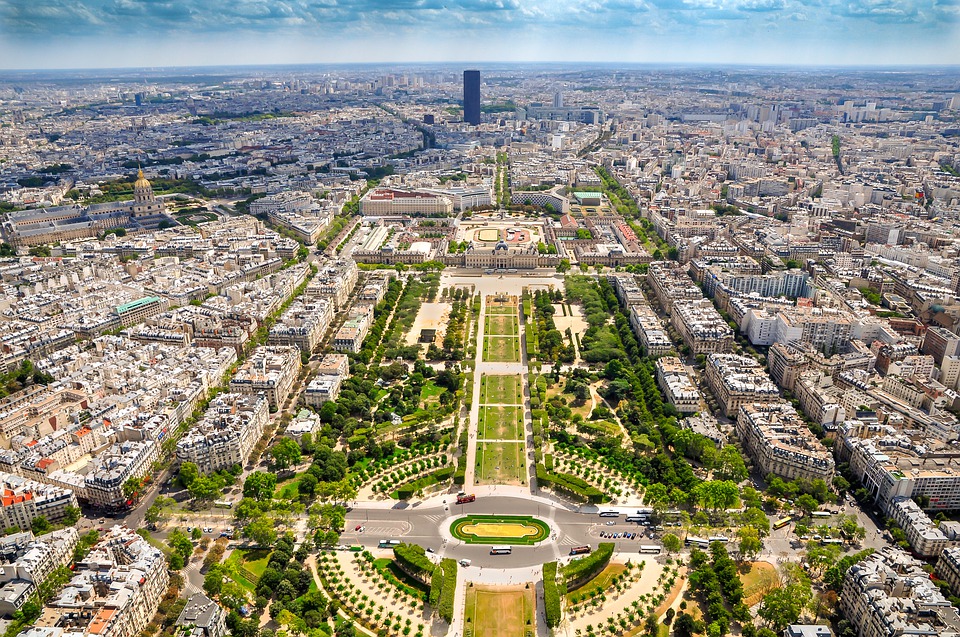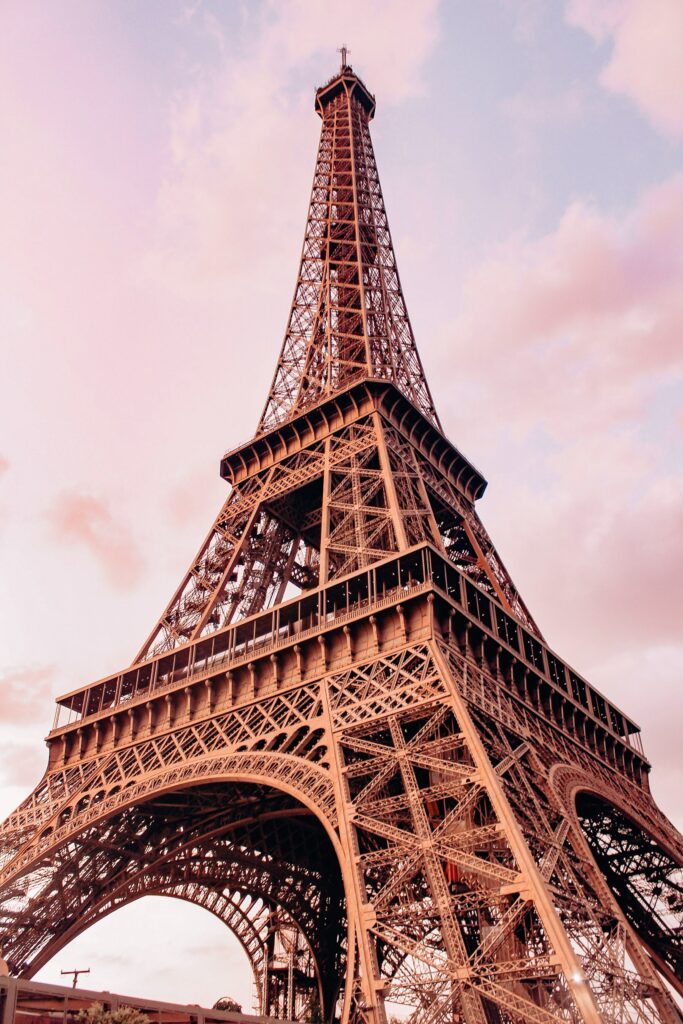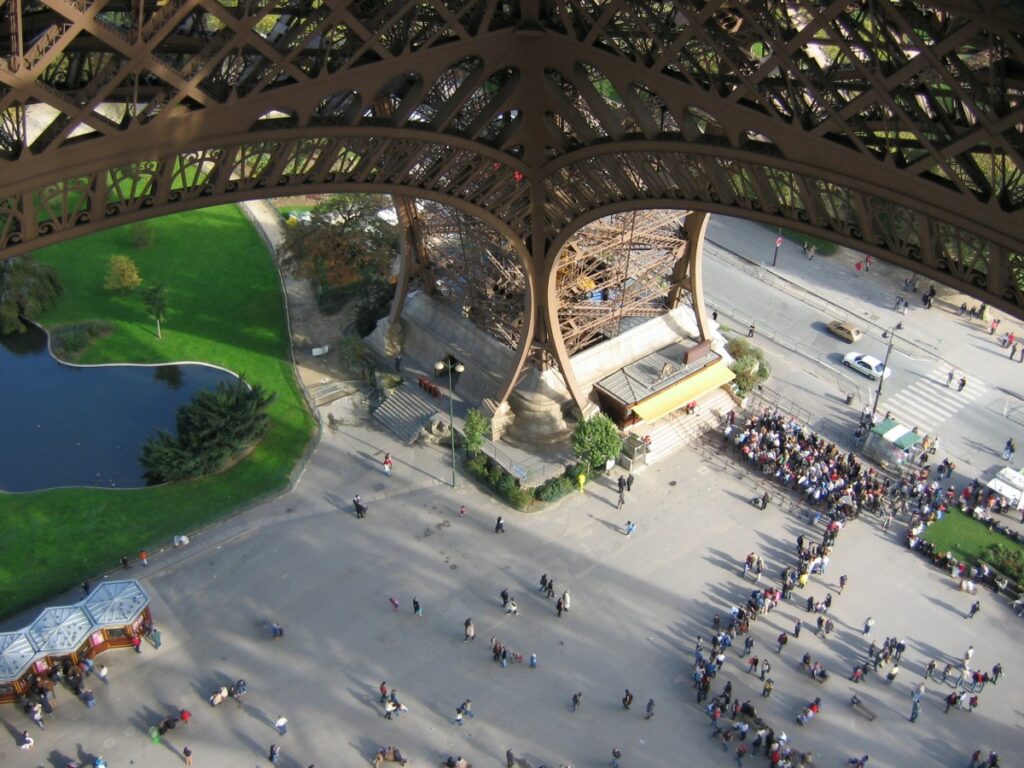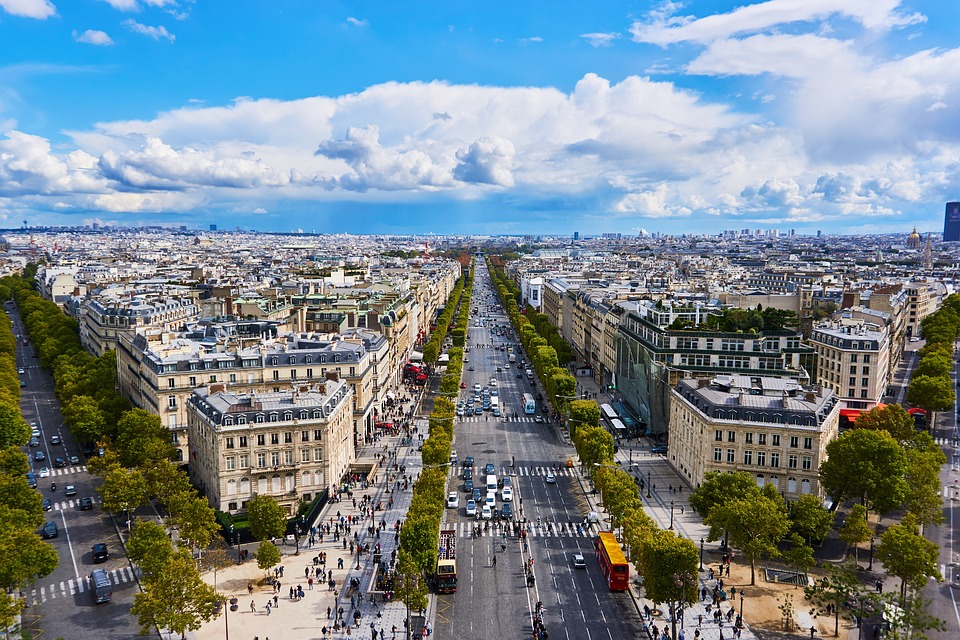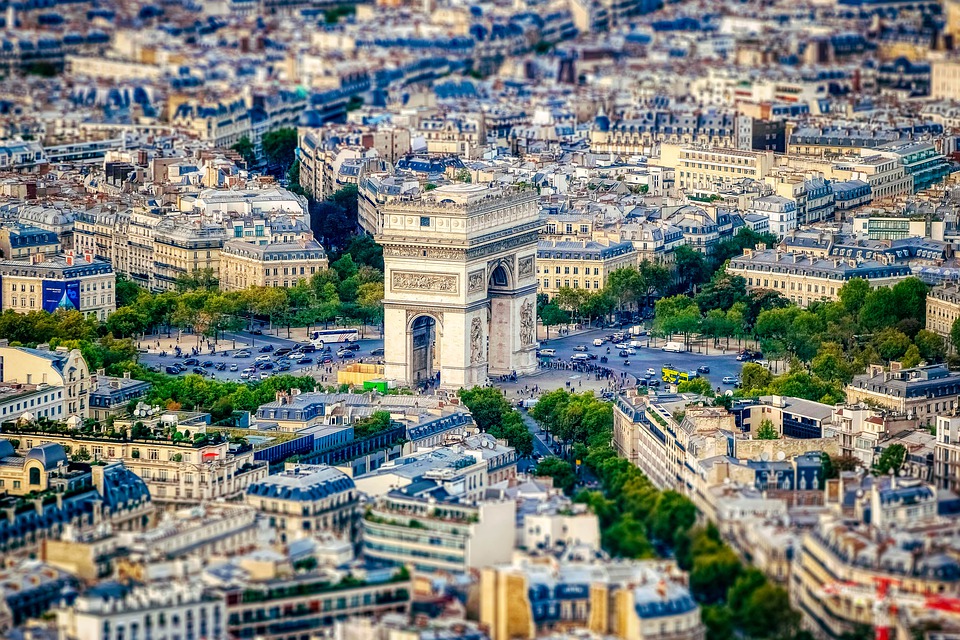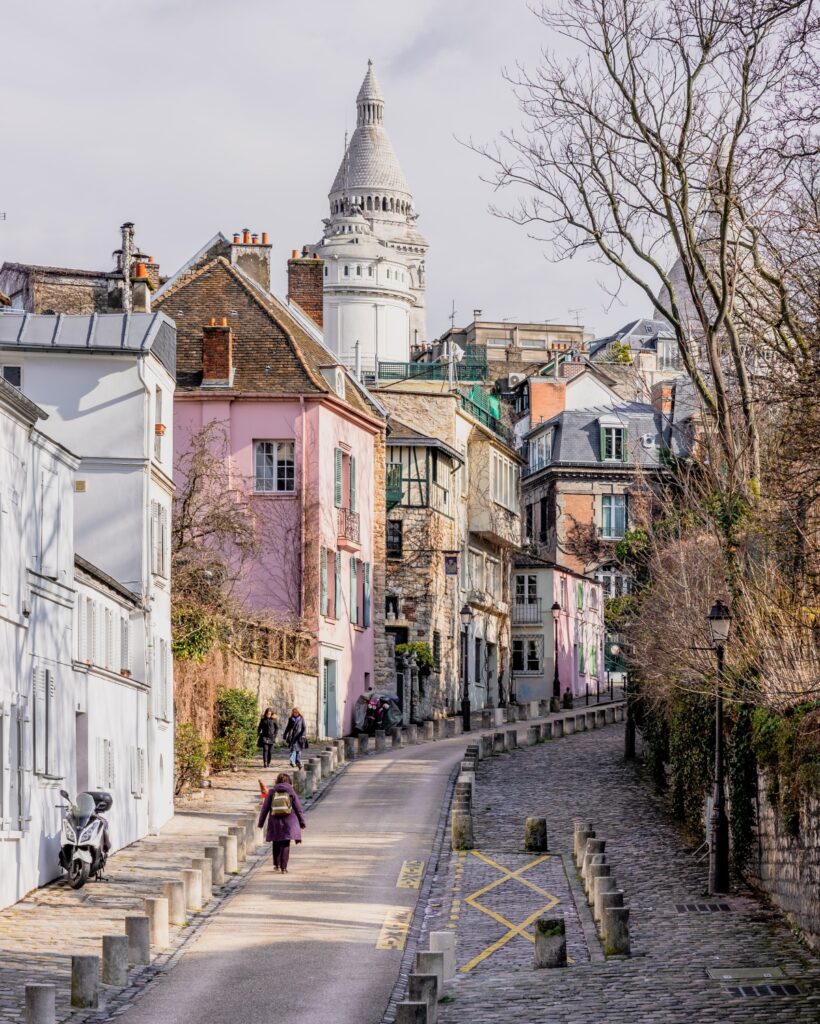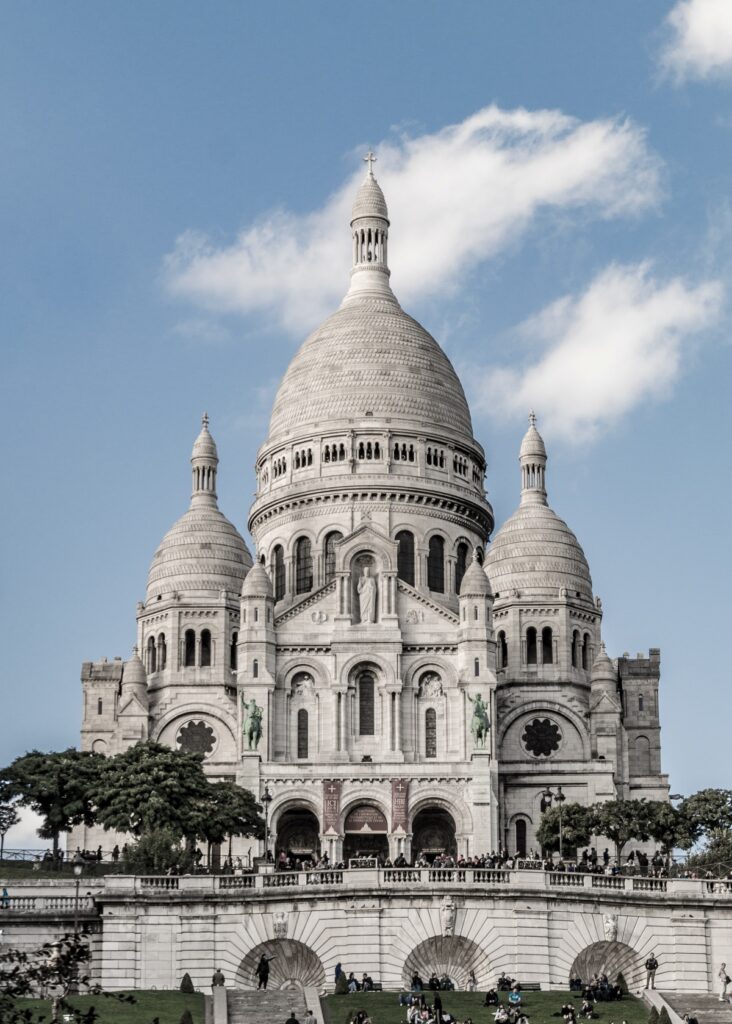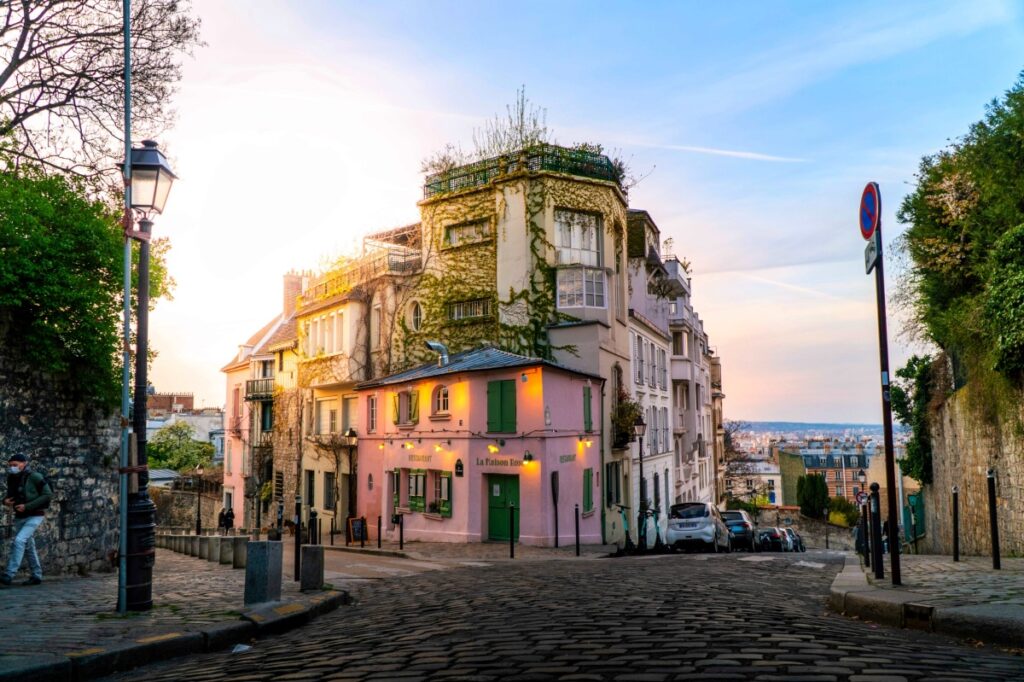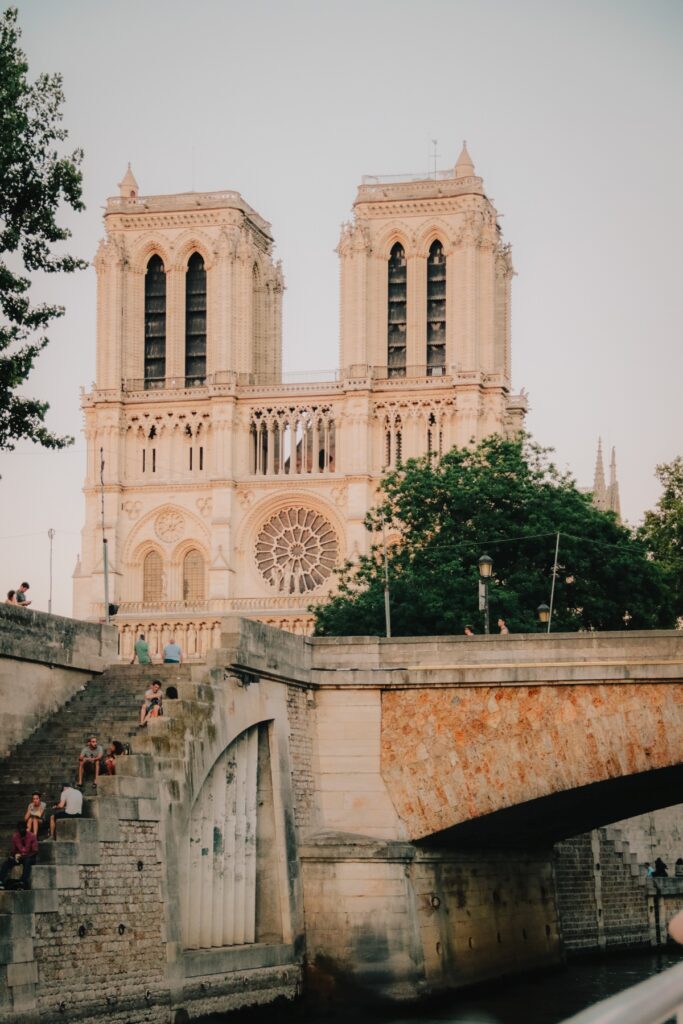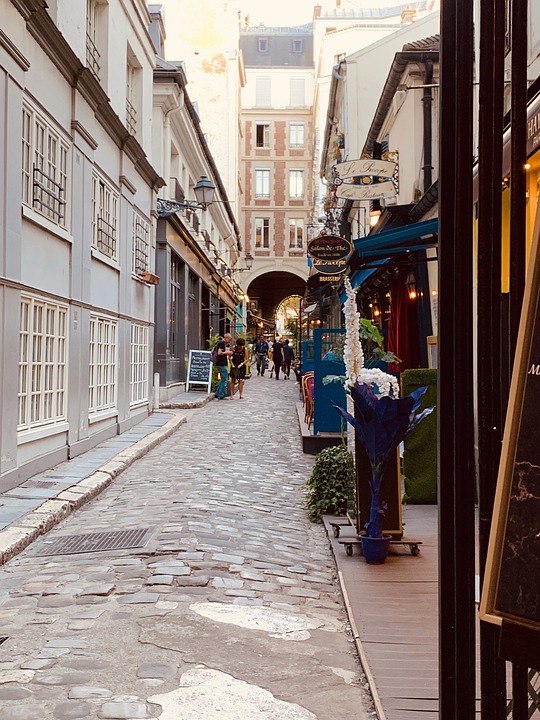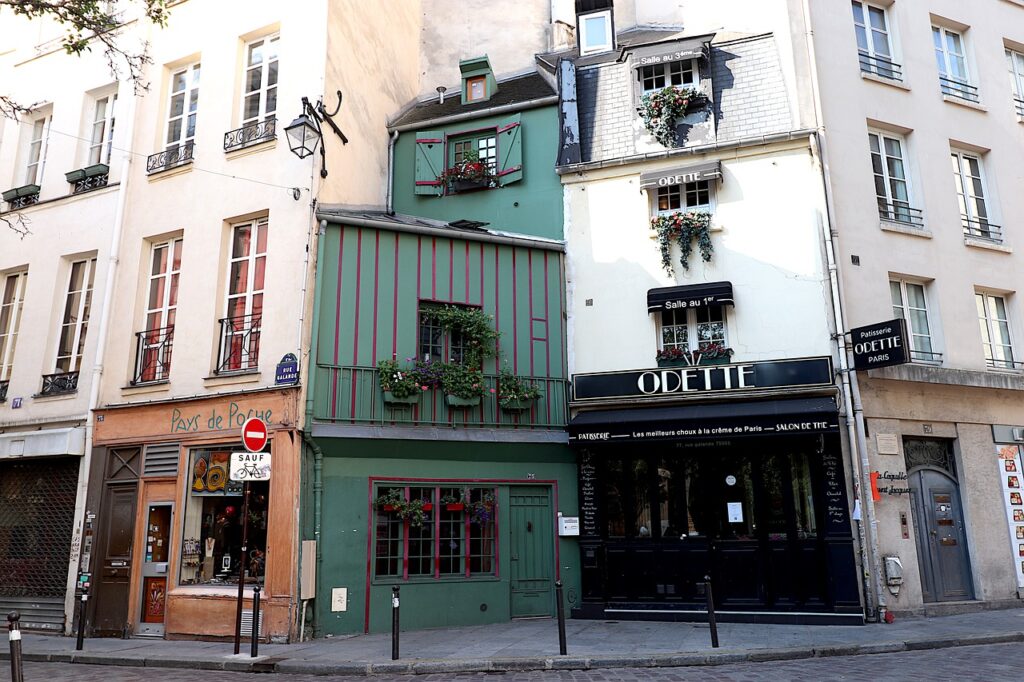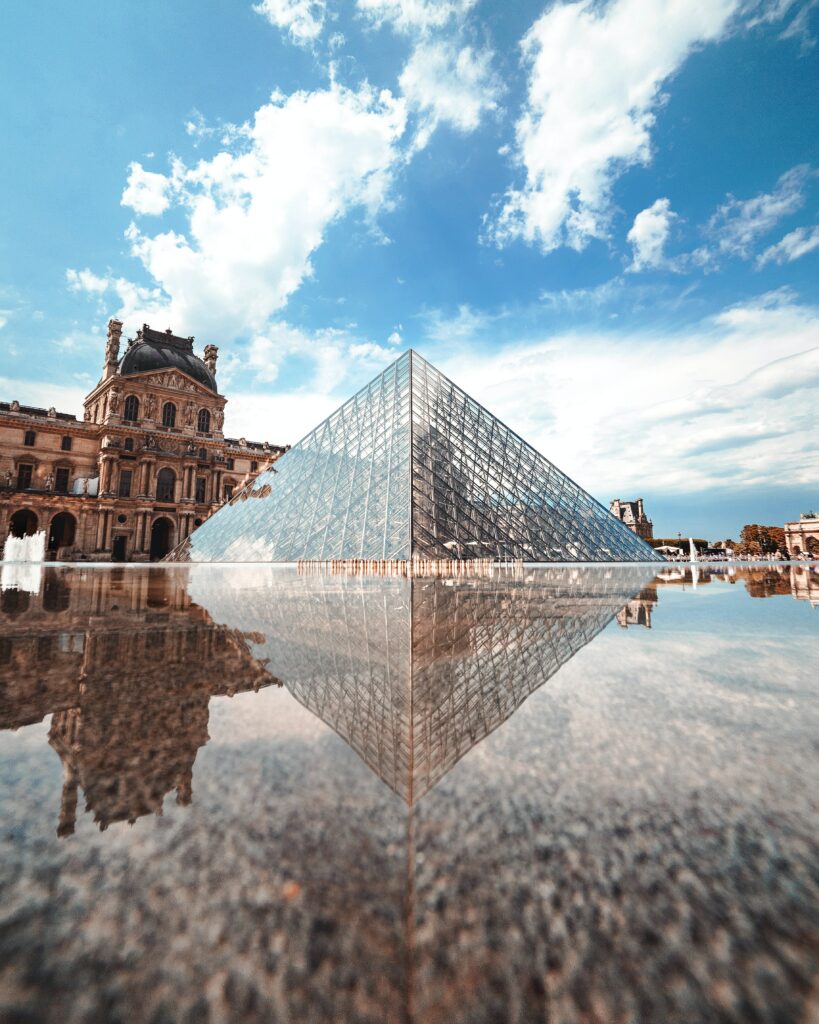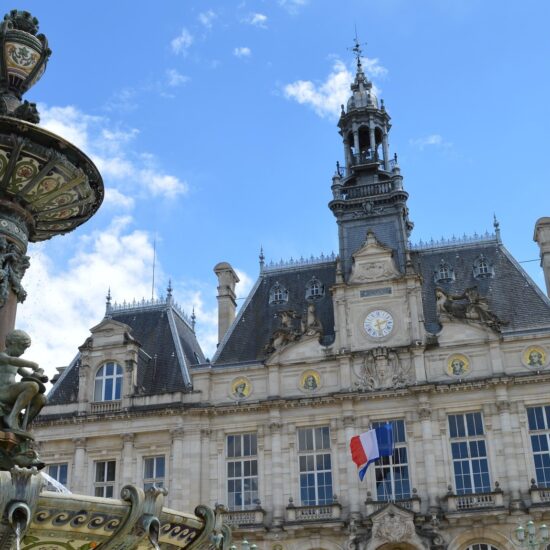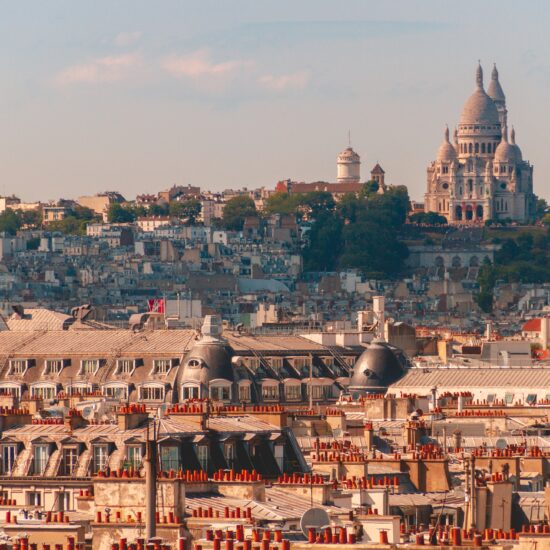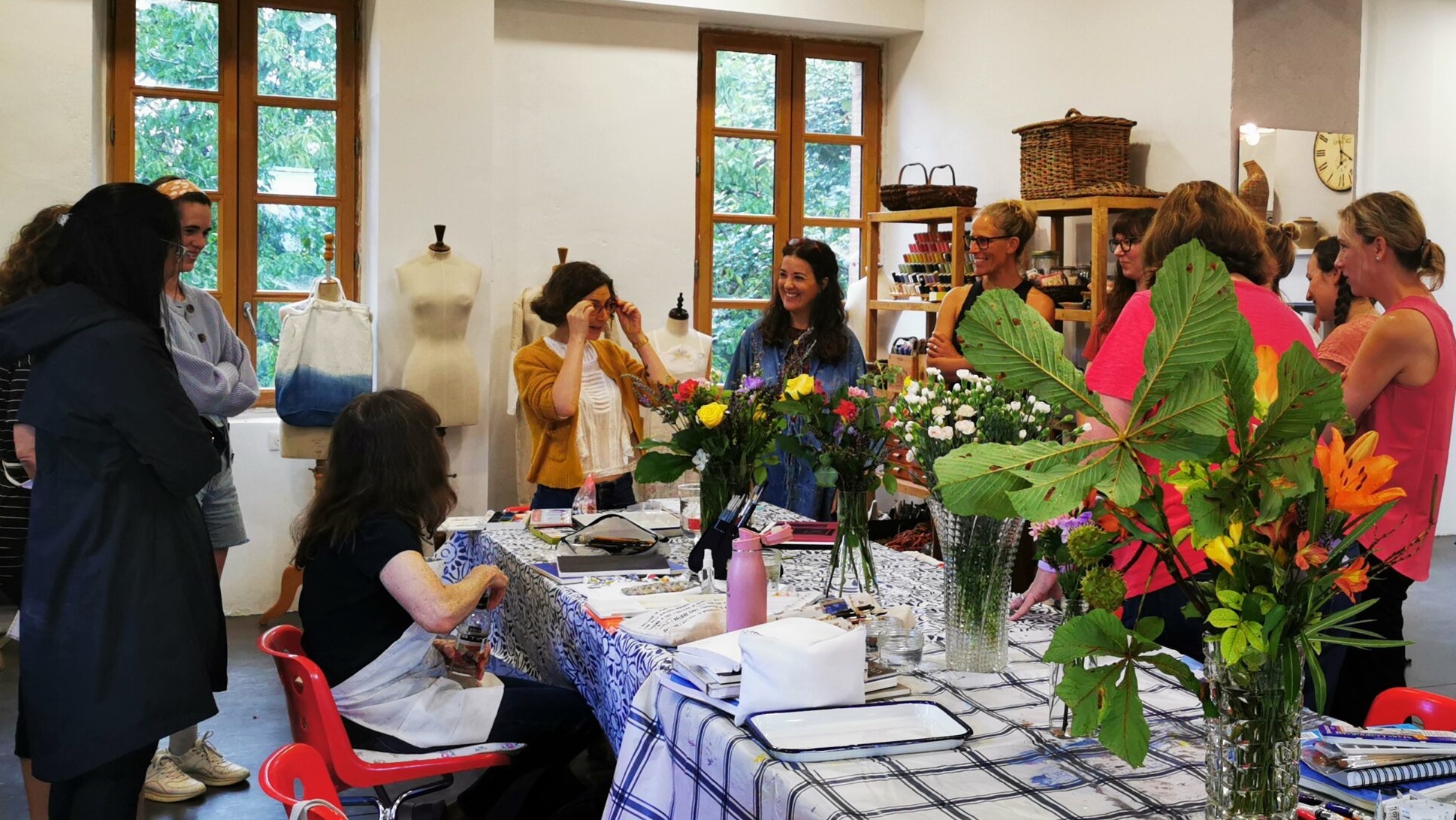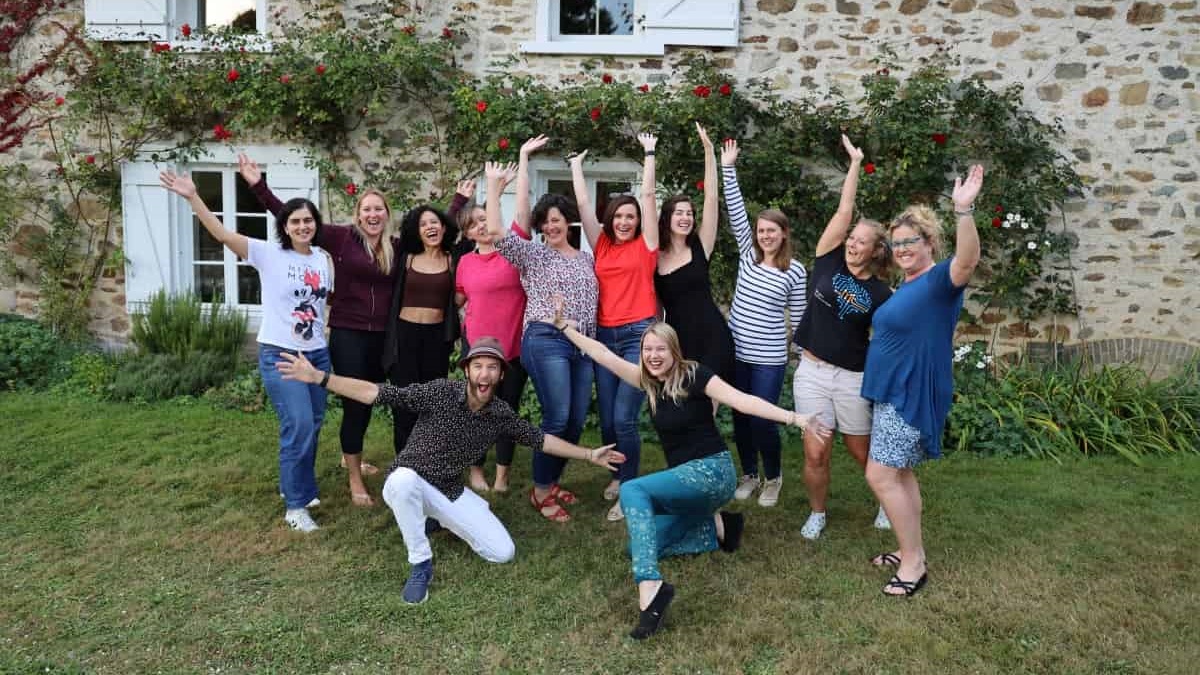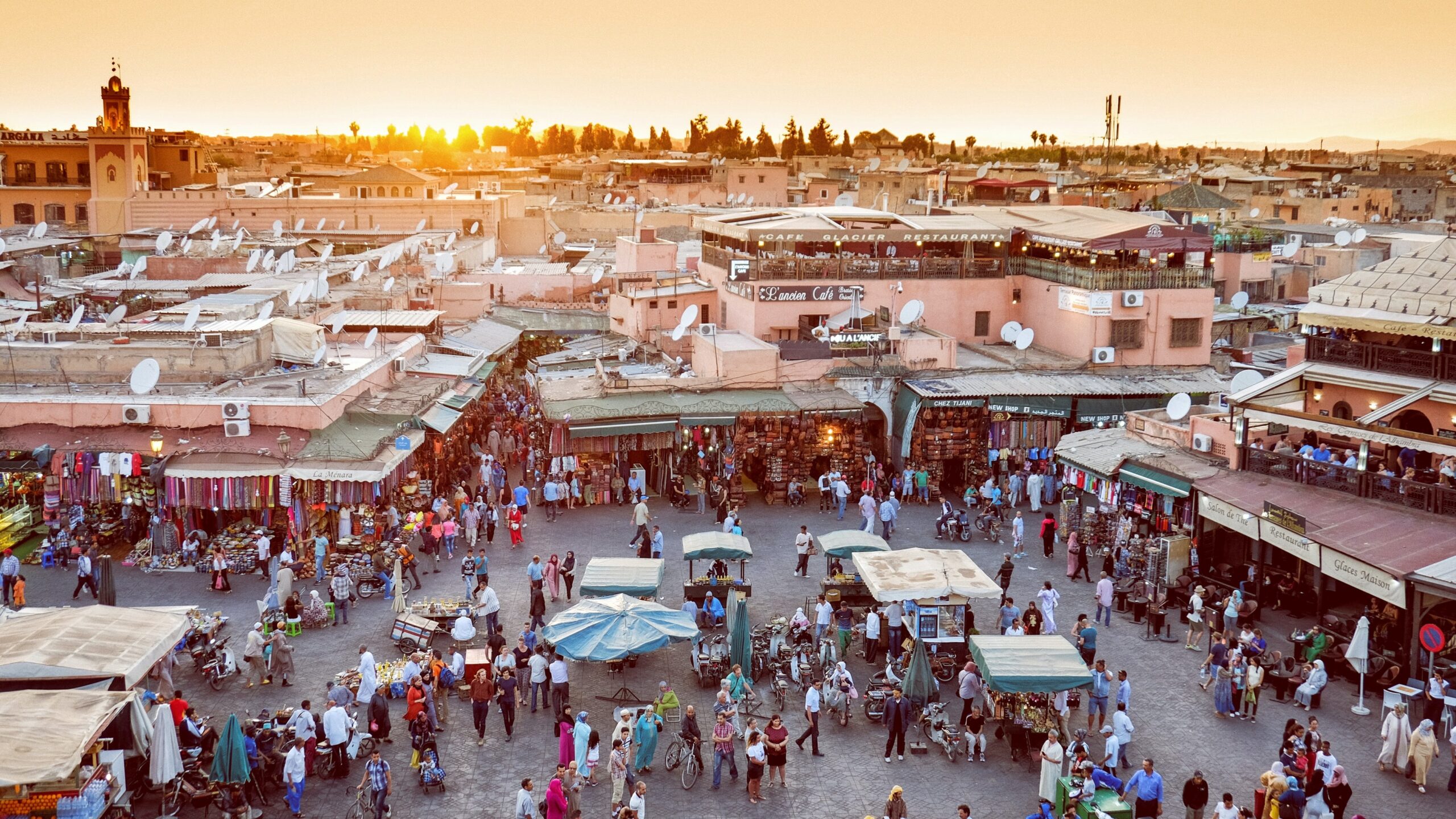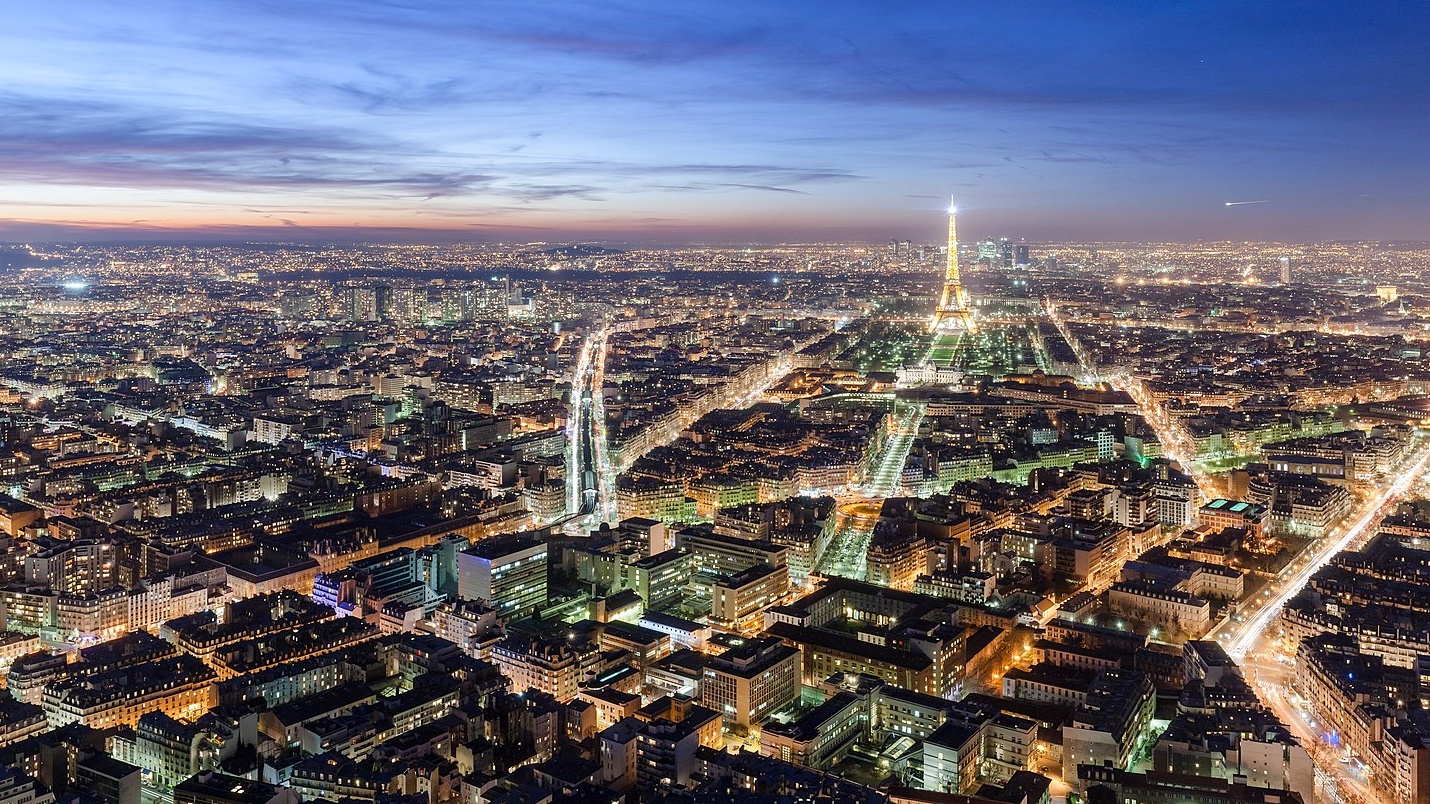
Five Things to See and Do on Your First Trip to Paris, France
Visiting Paris is a dream come true for any traveler. This is the City of Lights and the City of Love, one of the most romantic and beautiful places on the planet! Paris has over 45 million visitors a year, making it the most visited city in all the world. Paris has been the capital of art, culture, innovation, and forward-thinking throughout the ages, and the reverberations of these cultural and historical revolutions can still be vividly felt on the streets of the city. With so much to explore in this cultural capital of the world, how can you choose what to spend your limited time on? If this is your first time in Paris, UpTrek recccomends these five quintessential things to see and do.
1. The Eiffel Tower
Nothing says Paris like the Eiffel Tower. This incredible 300 m (984 ft) wrought-iron lattice structure is one of the most visited monuments in the world. Built for the 1889 World Fair by Gustave Eiffel, the tower quickly became a symbol of progress, beauty, and a symbol of Paris. Visiting the Eiffel Tower can be done at four levels, and you can choose how much you want to engage with this magnificent monument. You can enjoy a striking view of the tower from the Champ de Mars park — the best place to take the whole tower in and enjoy its impressive silhouette against the sky. If you want to explore the tower close-up, you can buy an access ticket and climb into the tower. The Eiffel Tower has three levels open for visitors: the first floor, second floor, and the top floor. Climb up to the first floor and learn more about the history of this legendary tower through an interactive show and a fun cultural trail. Here, you can also experience the thrilling sensation of stepping onto thin air. The first floor, 57 meters (187 ft) above the ground, features a transparent walkway that will challenge the bravest travelers. The second floor is the best place to head for breathtaking views of Paris’ most famous landmarks: the Arc de Triomphe, the Sacré-Cœur Basilica, and the Montparnasse Tower. There’s also a Michelin star restaurant located on the second floor — the Jules Verne. If you want to dine in style and enjoy gourmet food with a brilliant view, it’s best to make reservations well in advance. The top floor rises 276 meters (900 ft) above the ground and has an indoor and outdoor area. Here you can find a reconstruction of the office of Gustave Eiffel and more information about the tower. Make sure to dress warmly for going all the way up — it’s always windy on the top floor.
2. Arc de Triomphe and Champs-Élysées
The Arc de Triomphe, another emblematic landmark of France, sits majestically in Place Charles de Gaulle, at the intersection of Paris’ largest and most impressive boulevards. Built between 1806 and 1836 at the order of Napoleon Bonaparte, the Arc de Triomphe was meant to be a symbol of a powerful, unified France. It has been erected in honor of the soldiers who fought for France during the Napoleonic wars but came to symbolize respect and reverence for all those who came after as well. In 1921, an unknown soldier was buried at the base of the arch, and every day at 18:30 a flame of remembrance is rekindled in honor of all the soldiers that fought for France throughout history. The arch is decorated with imposing sculptures and has a long list of soldiers’ names engraved on the inner walls. You can visit the interior of this monument and climb all the way to the top for a view of the Eiffel Tower, or admire it from the world’s best-known boulevard: the Champs-Élysées.
The Champs-Élysées is a Paris must-see. Named after the paradisial resting place of gods and heroes in Greek mythology — the Elysian Fields — this boulevard has often been described as ‘the world’s most beautiful avenue’. It is worth taking some time to stroll down some of its 2 km (6,270 ft) length to enjoy high-end shopping or cultural exploration. The Champs-Élysées is divided into two parts: the upper part and the lower part, each with its own distinguishing features. The upper part begins at the Arc de Triomphe and is lined with some of the world’s most luxurious boutiques: Louis Vuitton, DIOR, Rolex, BVLGARI, and many more, but also popular flagship stores such as Nike, Celio, or L’Occitane, restaurants, and nightclubs. Strolling down this avenue will make you feel like a million dollars, and whether you plan on buying anything or just window shopping, the journey is worth taking for the feeling of abundance you’ll experience while walking the Champs-Élysées. The lower part of the avenue is closer to Place de la Concorde and runs through a beautiful park peppered with grand buildings and some of the top museums in Paris: the Petit Palais, the Grande Palais, and the Palais de la Découverte (Discovery Palace).
3. Montmartre and Sacré-Cœur
Montmartre is one of Paris’s most beautiful neighborhoods. It is often called “the village within the city”, and it’s easy to see why: Montmartre is filled with tiny colorful houses, winding cobbled streets, and cute little bistros and cafés. The neighborhood of Montmartre used to be an actual village once, on the outskirts of Paris. Now, it has been engulfed by the metropolis, but it retains all of its many charms. Sprawling on a hill, the neighborhood is most famous for its 19th-century reputation as a hotspot for Europe’s greatest artists: Salvador Dalí, Pablo Picasso, Vincent Van Gogh, Edgar Degas, Auguste Renoir, Gustave Moreau, and many more painters, sculptors, writers, musicians, and artists of all sorts. Everyone who was anyone in the art world of the 19th century came to Paris, specifically to Montmartre, to bask in the dazzling bohemian lifestyle where the most creative minds of the time gathered. This was a place for the dreamers, the ones who dared to be different. Walking in their footsteps will feel inspiring and magical. Take some time to get lost on the small streets and veer away from the tourists that often crowd this beautiful spot in Paris. For a really authentic experience, enjoy a late-night show at Au Lapin Agile cabaret, a Montmartre landmark since 1860. The Lapin Agile is Paris’ oldest bar-cabaret, still performing sing-along shows on Tuesdays, Thursdays, Fridays, and Saturdays from 9 pm to 1 am. The walls of this bar have seen the greatest artists of the 19th century and were even featured in the famous Picasso oil painting — Au Lapin Agile.
At the top of the hill, you have the elegant Basilica de Sacré-Cœur, like a crowning jewel overlooking Paris. The Sacré-Cœur is the “youngest” cathedral in Paris, built only a century ago after the German occupation of France in 1870. Its name translates to “The Basilica of the Sacred Heart of Paris”. The basilica is built in a Roman-Byzantine architectural style. From a distance, the white domes look powerful and imposing but up close, the encounter is much more delicate. What makes this cathedral so special is its white fine-grain stone that releases calcium whenever it gets wet. This means that the fair cathedral will go on becoming whiter and whiter the more it rains over the years and decades. Another perk of visiting the basilica is the view. Perched at the top of the Butte Montmartre, the square in front of the cathedral opens up to spectacular views of the City of Lights.
As a side-note, Montmartre is close to the famed Moulin Rouge. If you’re feeling audacious, you can visit the famous cabaret theatre, but be warned: it’s not as romantic and bohemian looking as in the movies. The area is now filled with gaudy sex shops and other “adult” establishments. If that’s what you’re looking for, you’ve come to the right place to explore. But if you have a romantic idea of Paris, you might want to spend your time elsewhere. If nothing more, you can just walk by and say that you’ve seen the famous Moulin Rouge, then move on to exploring Montmarte and its gems.
4. Notre-Dame de Paris and the Latin Quarter
The Notre Dame Cathedral has become famous due to stories like Victor Hugo‘s novel, The Hunchback of Notre-Dame, which was later animated and translated into several films. The Cathedral also made world news in April 2019 when a fire broke, destroying the cathedral’s roof and toppling its spire. The world came together then to mourn the destruction of 850 years of history, and to donate to its renovation. Now, the Cathedral is still undergoing renovation and is expected to be finished by 2024. While the interior cannot be visited anymore, you can still admire the gorgeous façade that remained intact thanks to the firefighter’s efforts in April 2019. The Cathedral is built on an island in the middle of the river Seine — Île de la Cité. Its construction took more than 300 years. Notre-Dame de Paris is the most famous Gothic Cathedral from the Middle Ages in the world. Admire its beautiful rosetta stained glass windows, the Gothic architecture with pillars and arches, and the remarkable gargoyles decorating the building.
To the South of Notre Dame de Paris lies the Latin Quarter. It is named as such because it is the oldest part of Paris, built on top of ancient Roman ruins. Another reason for its name is the fact that in 1150 the University of Sorbonne was inaugurated in this neighborhood. Back then, the area was full of students and university professors who primarily spoke Latin as an academic language — so the name stuck. This neighborhood is now packed with gorgeous cafés, colorful timber-framed houses and crooked alleyways paved with cobblestones. Here, you can also find the opulent Panthéon (where the greatest French citizens are laid to rest — think Voltaire, Jean-Jacques Rousseau, Victor Hugo, Èmile Zola, and Marie Curie), as well as many art galleries, cute boutique shops, and pastry shops. Some of the highlights of the Latin Quarter include The National Museum of Natural History, the Jardin des Plantes botanical gardens, and The Shakespeare and Company bookstore and press, but there’s always more to discover by roaming around this iconic neighborhood.
5. The Louvre Museum and Pont des Arts
The Louvre Museum is not to be missed on any trip to Paris. This astounding collection of art and history from all over the world includes some of the most precious artifacts and artworks in western culture and beyond. Here, you’ll find ‘Venus de Milo‘, Botticelli’s ‘Madonna and Child‘, the ‘Winged Victory of Samothrace‘, ‘Psyche Revived by Cupid’s Kiss‘, and of course the most famous painting in the whole world: the ‘Mona Lisa‘. Going to the Louvre to see the ‘Mona Lisa’ might sound like a cliché, and you would think that waiting in line with the huge crowd to see this one painting isn’t worth it, but to your surprise, you might find that you’re wrong. There’s a reason this painting by Leonardo da Vinci is so revered. Actually being in front of the painting and looking at the canvas doesn’t even begin to compare to looking at one of its billions of copies found everywhere. There’s a striking feeling of intimacy to the painting, and even though you might be in a room full of visitors (depending on the timing of your visit), for a few seconds you’ll feel like you’re alone in the room with her. That unique feeling is worth the few minutes spent in line to see the painting — you might just make a memory that you’ll remember for a lifetime.
After you’ve visited the Mona Lisa, go ahead and check either the Roman sculpture section, the Egyptian artifacts, the ancient Greek vases, or the Renaissance paintings by the great masters. The Louvre is huge, and even with a whole day to spend there, you might not have enough time or energy to see everything it has to offer. If you’re really dedicated to this task, we recommend you split your visit to the museum into two separate days so you can take it all in a more manageable way. Otherwise, if you just want to experience the highlights, it might be a better idea to think of a few pieces you really want to see beforehand. You can find information about the different galleries and highlights here. Choose some of these highlights and go on a little treasure hunt throughout the museum. When you’re done, reward yourself with a stroll on the neighboring Pont des Arts. This bridge over the river Seine used to be famous for the millions of locks that lovers would attach to the metal railings as a symbol of their undying love. This practice has been banned in recent years because the extra weight added on by the locks was endangering the bridge’s structure. Now, you can still enjoy the gorgeous view of the Institut de France across the bridge and of the winding river Seine rolling calmly in the distance.

